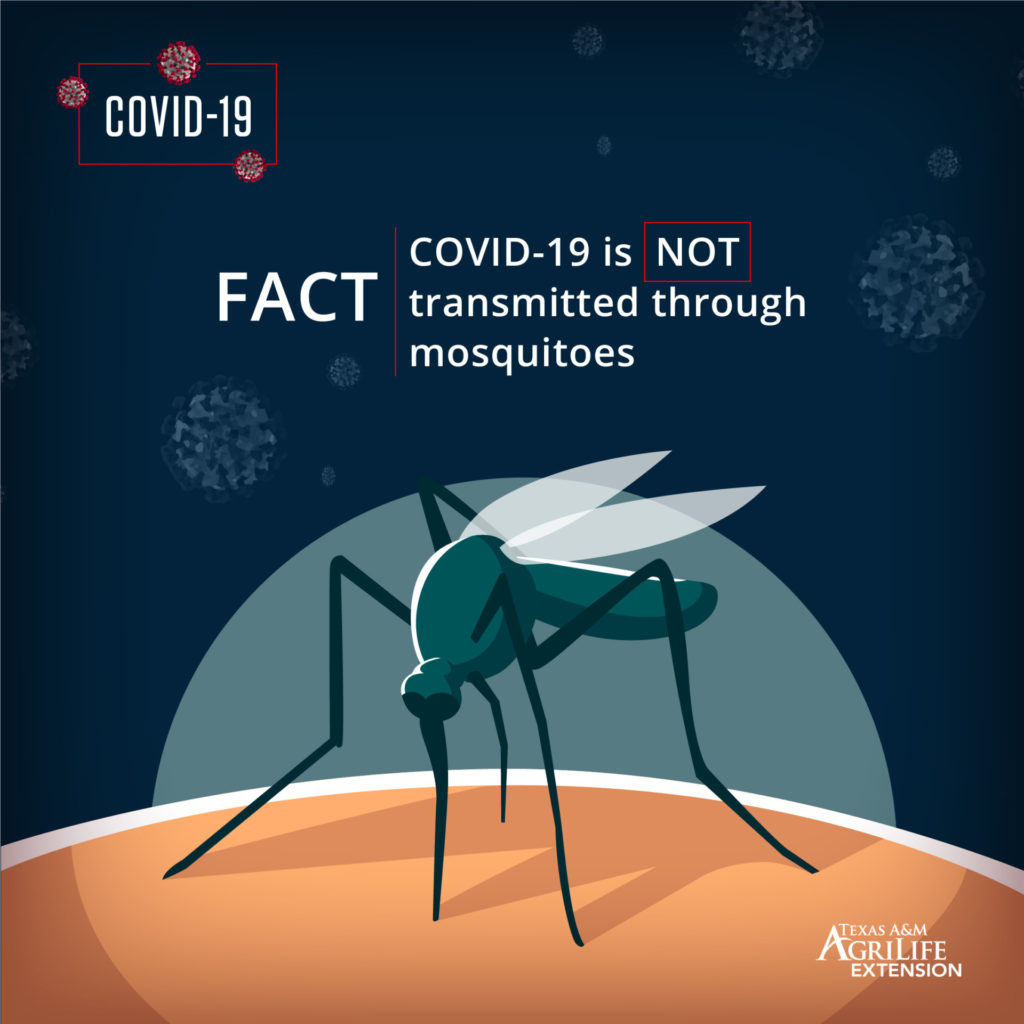“Ticks, like mosquitoes, are blood-feeding external parasites,” said Pete Teel, Ph.D., Texas A&M University interim head for the Department of Entomology in the College of Agriculture and Life Sciences. “The viruses they are known to transmit to humans must survive and grow, or replicate, inside the tick as well as survive through tick developmental stages.”
Mosquitoes, ticks and other blood-feeding arthropods are vectors of other viruses and pathogens.
“People still need to exercise caution and good judgment in avoiding bites,” said Zach Adelman, professor in the Department of Entomology. “But there is no evidence that a coronavirus can survive being digested by a mosquito, let alone transmitted to another person.”

“One unintended consequence of this trend is that people may be increasingly exposed to mosquitoes and other disease vectors as the weather warms. As a result, everyone should be reminded to wear appropriate clothing and insect repellant when spending time outdoors, as vector-borne diseases continue to pose a threat to public health, in addition to flu and COVID-19,” Myles said.
The virus is thought to spread mainly from person-to-person including people who are in close contact with one another—within about six feet—and through respiratory droplets produced when an infected person coughs or sneezes. These droplets can land in the mouths or noses of people who are nearby or possibly be inhaled into the lungs.
The World Health Organization has also reported there is no information nor evidence, at this time, to suggest that that novel coronavirus could be transmitted by mosquitoes.
The American Mosquito Control Association is monitoring the situation.
For more information regarding the Coronavirus, visit Texas A&M AgriLife’s Disaster Education Network.
To help prevent the spread and protect yourself, wash hands under soap and water for at least 20 seconds, use a hand sanitizer containing at least 60% alcohol, avoid close contact and practice social distancing.
